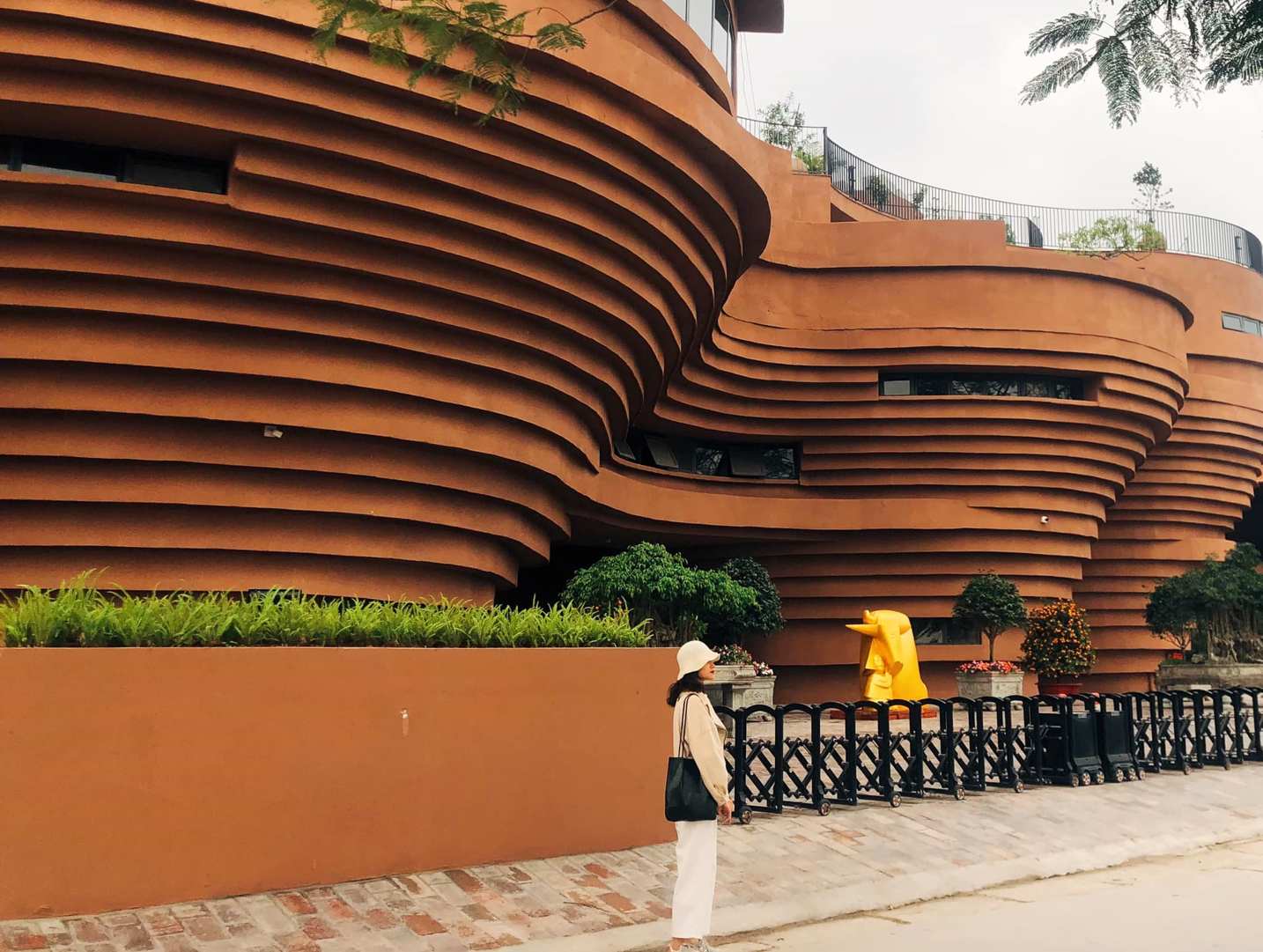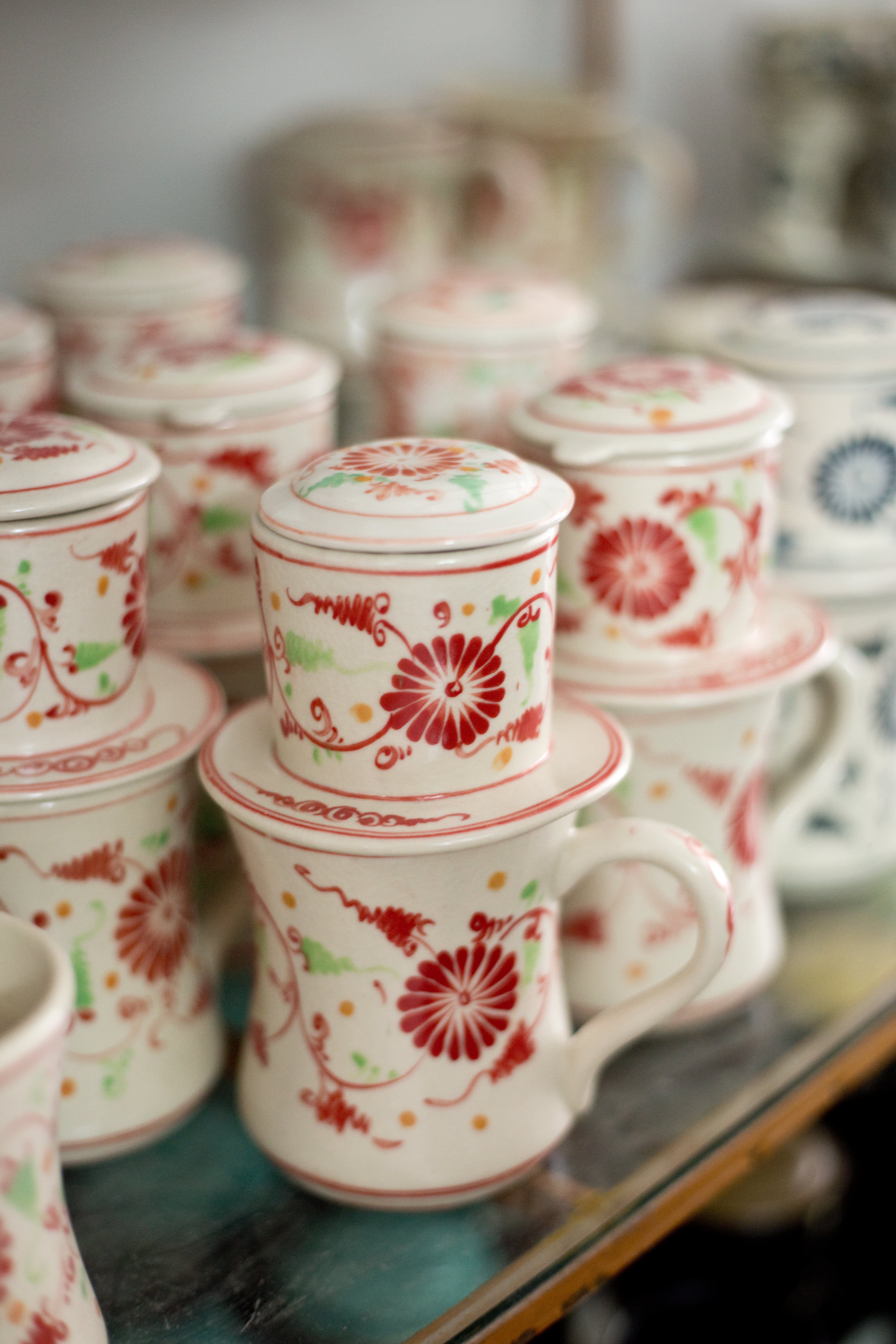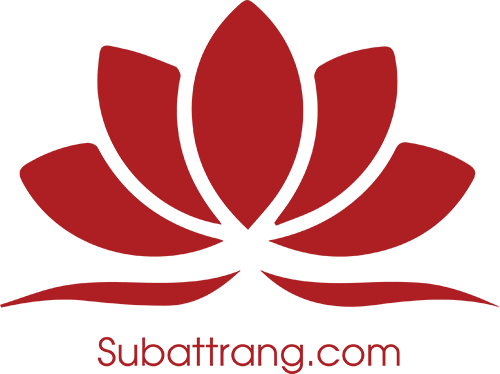News
Interpret Symbolism in Motifs of Bat Trang Ceramics
Bat Trang ceramics, renowned for their exquisite craftsmanship and intricate designs, are a testament to Vietnam’s rich cultural heritage. These ceramics embody centuries-old traditions, with motifs that are not merely decorative but carry profound symbolic meanings. Understanding the symbolism embedded in Bat Trang ceramics offers valuable insights into Vietnamese spirituality, philosophy, and daily life. This article delves deep into interpreting the symbolism found in the motifs of Bat Trang ceramics, highlighting their aesthetic and cultural significance.
Historical Context and Cultural Significance of Bat Trang Ceramics

To fully appreciate the symbolism in Bat Trang ceramics, one must first understand the historical backdrop and cultural importance of this craft. The village of Bat Trang, located near Hanoi, has been a pottery hub for over 700 years, producing ceramics that have gained widespread acclaim both domestically and internationally. The evolution of Bat Trang ceramics reflects the changing tastes, beliefs, and social dynamics of Vietnamese society.
The symbols inscribed on these ceramics serve various functions: they can invoke protection, prosperity, fertility, or spiritual guidance. This section explores the historical trajectory of Bat Trang ceramics and how cultural values have shaped their artistic expressions.
Origins of Bat Trang Ceramics Tradition
Bat Trang’s pottery tradition began during the Ly Dynasty (11th century), flourishing particularly under the Tran and Le Dynasties. The village utilized abundant local clay and developed techniques such as high-temperature firing and glazing, setting its ceramics apart from those of other regions.
The motifs painted and carved onto Bat Trang ceramics evolved alongside influences from Confucianism, Taoism, Buddhism, and indigenous Vietnamese beliefs. This blend of religious and cultural elements created a unique visual language encoded with symbolism.
Over centuries, Bat Trang ceramics became essential household items and ceremonial objects, embedding symbolic motifs that conveyed wishes for good fortune and moral virtues.
Cultural Functions of Ceramics in Vietnamese Society
In Vietnamese culture, ceramics are more than utilitarian objects; they are vessels of meaning. Bat Trang ceramics often adorned homes, temples, and ancestral altars, serving as intermediaries between the human and spiritual worlds.
The motifs reflected ideals such as harmony, balance, and auspiciousness. They were believed to protect families, attract wealth, and ensure health and longevity.
Furthermore, specific motifs were chosen deliberately for occasions like weddings, funerals, and festivals, underscoring their role in social rituals.
Evolution of Motif Styles Over Time
The iconography of Bat Trang ceramics continually adapted to aesthetic trends and socio-political changes. Early ceramics featured naturalistic depictions of flora and fauna, while later works incorporated stylized dragons, phoenixes, and mythological creatures.
Colors and glaze techniques also evolved, enhancing the visibility and vibrancy of motifs. Despite these changes, the symbolic essence remained consistent, reflecting enduring cultural values.
This historical perspective sets the stage for exploring the key symbolic motifs found in Bat Trang ceramics.
Common Motifs in Bat Trang Ceramics and Their Symbolic Meanings

Bat Trang ceramics feature a rich array of motifs, each imbued with layered symbolism. These motifs can be categorized broadly into animal, floral, geometric, and mythical themes. Understanding these categories offers insight into the values and beliefs cherished by Vietnamese artisans and their patrons.
Animal Motifs and Their Symbolism
Animals play a significant role in Bat Trang ceramics, representing virtues, powers, and cosmic principles.
- Dragon: A symbol of power, strength, and good fortune. In Vietnamese culture, dragons are benevolent beings associated with rain and fertility.
- Phoenix: Represents grace, renewal, and female beauty. Often paired with the dragon to symbolize marital harmony.
- Turtle: Emblematic of longevity, wisdom, and stability.
- Fish: Signifies abundance and perseverance, reflecting the agrarian economy reliant on water resources.
These animals are drawn with meticulous detail, their postures and expressions carefully designed to enhance their symbolic potency.
Floral and Botanical Motifs
Floral motifs convey purity, growth, and seasonal cycles. They are also linked with particular philosophical ideas:
- Lotus: Central to Buddhist symbolism, it denotes purity rising from worldly filth, enlightenment, and spiritual awakening.
- Peony: Known as the “king of flowers,” it symbolizes wealth, honor, and feminine beauty.
- Bamboo: Stands for resilience, flexibility, and integrity, valued traits in Confucian thought.
These flowers and plants are arranged in patterns that suggest harmony with nature and cyclical renewal.
Geometric Patterns and Abstract Symbols
Geometric motifs provide structural balance and represent cosmic order. Examples include:
- Cloud Patterns: Symbolize celestial realms and divine blessings.
- Wave Motifs: Reflect water’s vitality and the flow of life energy (Qi).
- Circular Designs: Often evoke completeness and unity.
These abstract motifs frame the narrative scenes or animate the background, contributing to the overall symbolic message.
Mythical Creatures and Legend-Based Motifs
Beyond common animals, Bat Trang ceramics depict mythical figures that link art to folklore and spirituality:
- Qilin (Kỳ Lân): A hybrid creature symbolizing peace, prosperity, and justice.
- Immortals (Taoist figures): Represent transcendence and longevity.
- Dragons and Phoenixes in Combat or Harmony: Illustrate cosmic dualities such as yin-yang and balance.
These motifs connect the physical world to metaphysical concepts, embedding deeper philosophical meanings into everyday objects.
Techniques and Artistic Expression in Bat Trang Ceramic Motifs
The transmission of symbolism through Bat Trang ceramics is deeply influenced by the techniques employed in crafting and decorating the pieces. This section examines how artistic methods impact the expression and perception of symbolic motifs.
Material Selection and Its Symbolic Implications
The choice of clay, glazes, and pigments affects how motifs appear and resonate symbolically.
For instance, white porcelain backgrounds highlight blue cobalt motifs, emphasizing purity and clarity. Earth-toned ceramics suggest groundedness and connection to nature.
Artisans consider these material qualities to amplify the intended symbolic messages, ensuring coherence between form and content.
Painting Methods and Stylistic Variations
Motifs on Bat Trang ceramics are applied using brush painting, engraving, and stamping. Each method contributes a distinct texture and emotional tone.
Brush strokes can be fluid or precise, affecting the dynamism of animal forms or the delicacy of floral patterns. Engraving adds depth and tactile presence, invoking a sense of permanence.
Stylistic variations reflect regional preferences and the artist’s interpretation of traditional symbolism, demonstrating creative engagement with inherited motifs.
Use of Color Symbolism
Color plays a pivotal role in conveying mood and meaning:
- Blue and White: Traditional colors symbolizing tranquility, immortality, and purity.
- Red: Associated with happiness, luck, and celebration.
- Green: Linked to growth and harmony.
The interplay of colors on Bat Trang ceramics enhances the symbolic narratives depicted, making them visually compelling and spiritually resonant.
Integration of Symbolism in Functional Forms
Bat Trang ceramics include bowls, vases, plates, and teapots, each serving practical and symbolic roles.
For example, a tea set decorated with lotus and dragon motifs during ritual ceremonies embodies hospitality and spiritual grace.
Understanding how form and decoration combine to express symbolism enriches our appreciation of Bat Trang ceramics beyond their surface beauty.
Interpreting Specific Iconographic Themes in Bat Trang Ceramics
This section provides an in-depth analysis of recurring iconographic themes, unpacking their complex symbolism and cultural relevance.
The Dragon and Phoenix: Harmony and Balance
The pairing of dragon and phoenix is endemic in Vietnamese art, symbolizing the union of yin and yang, male and female energies.
On Bat Trang ceramics, this motif often adorns wedding gifts, suggesting marital bliss and prosperity.
Artists depict the creatures intertwined or facing each other, visually narrating the philosophical ideal of harmonious duality that sustains the universe.
The Five-Petaled Flower and Its Quintessential Meaning
The five-petaled flower motif frequently appears in Bat Trang designs, symbolizing the five elements (metal, wood, fire, water, earth) fundamental to Eastern cosmology.
This motif conveys balance and the interconnectedness of natural forces, reminding users of ceramics of their place within the cosmic order.
Its recurrent use reflects deep respect for ancient philosophies that govern health, nature, and destiny.
The Longevity Symbol (Shou Character) and Associated Imagery
The Chinese character for longevity (寿, Shou) is often integrated into Bat Trang ceramic designs, accompanied by peaches, cranes, and pine trees.
Each element reinforces the theme of a long, healthy life, a universal wish manifested in tangible form through ceramics.
The deliberate incorporation of these images underscores the role of Bat Trang artifacts as carriers of blessings and positive affirmations.
The Lotus Pond Scene: Spiritual Purity and Renewal
Scenes depicting lotus ponds abound in Bat Trang ceramics, evoking themes of spiritual purity and rebirth.
The lotus rises unsullied above muddy waters, mirroring the human soul’s potential for enlightenment despite worldly impurities.
Such scenes encourage contemplation and offer comfort, linking everyday objects to transcendent ideals.
Contemporary Interpretations and Global Influence of Bat Trang Ceramic Motifs
As Bat Trang ceramics continue to evolve, modern artists and collectors reinterpret traditional motifs, blending old symbolism with new contexts.
This dynamic relationship between past and present ensures the ongoing relevance and vitality of Bat Trang ceramics in a globalized world.
Revival and Innovation in Motif Design
Contemporary ceramists experiment by fusing traditional motifs with modern aesthetics, addressing contemporary themes while respecting heritage.
This innovation keeps symbolism alive, making it accessible and meaningful to younger generations and international audiences.
It also involves rethinking color schemes, shapes, and combinations without losing the core symbolic references.
Global Appreciation and Cross-Cultural Symbolism
Bat Trang ceramics enjoy increasing popularity worldwide, where motifs are appreciated both aesthetically and for their rich symbolism.
Cross-cultural dialogues emerge as foreign collectors and scholars interpret Vietnamese symbols through their own cultural lenses, broadening understanding.
This global exchange enriches the symbolic vocabulary associated with Bat Trang ceramics, fostering intercultural respect and curiosity.
Preservation Challenges and the Role of Symbolism
Modern industrialization and market demands pose challenges for traditional Bat Trang craftsmanship and motif accuracy.
Efforts to preserve authentic symbolic representations are vital for maintaining cultural identity.
Institutions, artisans, and communities collaborate to document, teach, and promote awareness about the significance of ceramic motifs.
Table: Summary of Major Bat Trang Ceramic Motifs and Their Symbolism
| Motif | Symbolic Meaning | Cultural Context |
|---|---|---|
| Dragon | Power, strength, protection, fertility | Imperial authority, rain deity |
| Phoenix | Renewal, grace, harmony | Marital harmony, feminine virtues |
| Lotus | Purity, enlightenment, spiritual awakening | Buddhist symbolism |
| Peony | Wealth, honor, beauty | Prosperity and social status |
| Bamboo | Resilience, flexibility, integrity | Confucian values |
| Fish | Abundance, perseverance | Agrarian life, prosperity |
| Qilin (Kỳ Lân) | Peace, justice, prosperity | Mythical protector |
| Five-petaled flower | Balance of five elements | Cosmological harmony |
| Longevity character | Long life | Health and immortality aspirations |
Conclusion
Bat Trang ceramics stand as a vivid canvas where artistry and symbolism intertwine, reflecting Vietnam’s rich cultural tapestry. The motifs etched onto these ceramics encapsulate profound meanings derived from mythology, religion, natural phenomena, and philosophical doctrines. By interpreting these symbols—ranging from dragons embodying power to lotus flowers signifying purity—we gain a deeper appreciation of the spiritual and cultural narratives woven into everyday objects. The ongoing evolution and global resonance of Bat Trang ceramics emphasize their timeless value and the enduring human quest to express identity, hope, and harmony through art.
